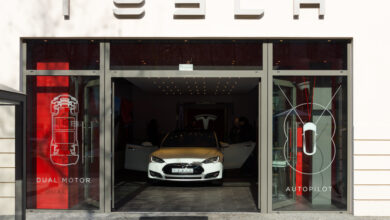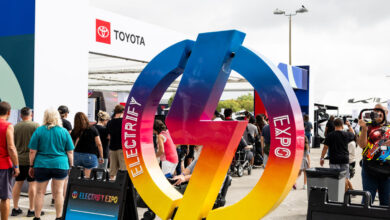Robust Growth in Electric Vehicle Battery Capacity Marks 2023

In an era where sustainable transportation is escalating, the global battery capacity installed in passenger electric vehicles (EVs) saw a significant increase of 44 percent year-over-year (YoY) in 2023. The increase has been primarily attributed to the rise in the average battery size per vehicle, as well as a strong 38 percent YoY growth in electric vehicle sales. As automakers focus on producing long-range EVs, particularly in the mid-to-high-end market segments, it’s clear that they aim to bolster consumer confidence in EVs’ travel radius capabilities.
Counterpoint’s Global EV Battery Tracker has highlighted this surge in installed battery capacity, signaling a robust trend toward electric mobility adoption. Liz Lee, the Associate Director of Counterpoint, notes the popularity of long-range EVs in the United States and Europe as a key factor propelling sales momentum. Nonetheless, this average could have been higher if not for the proliferation of more affordable, entry-level EVs in China.
Chinese battery manufacturers, like CATL and BYD, capitalized on this growth, as they command over two-thirds of the global EV battery capacity market. With domestic market support and increasing international demand, these companies are markedly shaping the EV landscape. However, the shift toward more cost-effective electric vehicles is expected as the industry pushes for broader accessibility, especially with the use of Chinese LFP batteries.
Counterpoint anticipates continued double-digit growth in EV sales across all regions, maintaining a strong demand for batteries. Still, as competition intensifies, industry leaders suggest that strategies may evolve to include substantial battery cost reductions through technological advances and geo-political dynamics. This could open up new opportunities for non-Chinese battery suppliers to compete more effectively on a global scale.
Industry Overview
The electric vehicle (EV) industry has been witnessing rapid growth as concerns over environmental sustainability and advances in battery technology propel the sector forward. The significant 44 percent increase in global battery capacity within passenger EVs in 2023 reflects a deeper commitment from manufacturers and consumers alike toward clean transportation options. As automotive companies enhance the energy density of batteries, the travel range of EVs is extending, further increasing their appeal.
Market Forecasts
Analysts predict sustained growth in the EV market over the coming years. Market research forecasts that the global electric vehicle market size is expected to grow substantially, with some projections estimating the market may exceed a compound annual growth rate (CAGR) of around 20 percent for the next decade. This growth trajectory is supported by government incentives, declining battery costs, and the introduction of a wider variety of electric vehicle models catering to different consumer preferences.
Industry Issues
Despite the optimistic outlook, the EV industry faces several challenges. Supply chain disruptions, raw material shortages, and geopolitical factors all influence production cost and capacity. Moreover, the environmental impact of battery production and end-of-life disposal remains a concern. The industry is also grappling with establishing a comprehensive charging infrastructure network to alleviate range anxiety amongst potential consumers.
Chinese Market Impact
Chinese market influences are palpable in the industry, with companies like CATL and BYD dominating the battery manufacturing space. The market support from the domestic front and a focus on affordable EVs have allowed China to secure a significant stake in the global EV market. These vehicles, many equipped with lithium iron phosphate (LFP) batteries, are gaining traction due to their lower cost and adequate performance for entry to mid-level EVs.
Strategic Developments
In response to the intensifying market competition and the push for more cost-effective EV solutions, both established and emerging battery manufacturers are investing in research and development to lower costs without compromising quality. The potential advancements in solid-state batteries, silicon anodes, and battery recycling are some areas that could revolutionize the industry. These technologies promise to deliver higher energy densities, faster charging capabilities, and longer life spans.
For further information on the global EV industry and market trends, consider visiting respected sources such as the International Energy Agency or industry-focused news outlets like Bloomberg, which provide insights and projections for the EV market and related technology developments. It is crucial to keep informed from reliable sources as the industry continues to evolve at a rapid pace.

Marcin Frąckiewicz is a renowned author and blogger, specializing in satellite communication and artificial intelligence. His insightful articles delve into the intricacies of these fields, offering readers a deep understanding of complex technological concepts. His work is known for its clarity and thoroughness.



